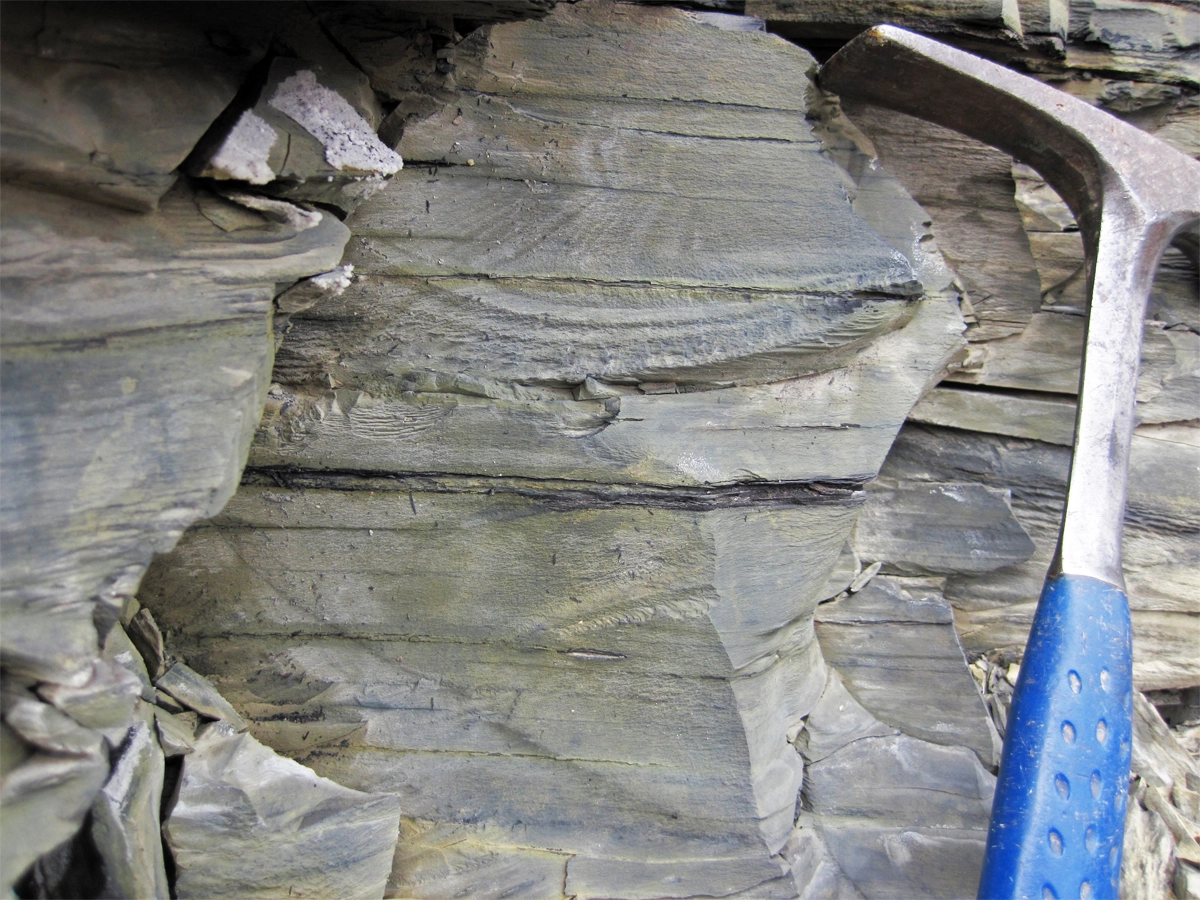Properties of Shale
Shale is a type of sedimentary rock that is composed primarily of very fine-grained clay minerals, silt-sized particles, and organic matter. It often has a layered or laminated appearance and is known for its ability to split into thin, flat sheets. Shale is typically formed in quiet aquatic environments, such as lakes and marine basins.

The following table provides a list of shale properties in both SI and US customary/Imperial units at normal temperature and pressure (NTP).
Click on the button to switch between Metric and Imperial units.
| Physical Properties | Metric |
|---|---|
| Density | 2600 - 2900 kg/m3 |
| Porosity | 10 - 30% |
| Mechanical Properties | Metric |
| Young’s Modulus (E) | 10 - 35 GPa |
| Compressive Strength | 30 - 130 MPa |
| Modulus of Rupture | 2 - 50 MPa |
| Hardness (Mohs) | 2 - 3 |
| Thermal Properties | Metric |
| Thermal Conductivity | 0.4 - 3.3 W/m·K |
| Specific Heat Capacity (Cp) | 420 - 2790 J/kg·K |
| Coefficient of Thermal Expansion (αL) | 9×10-6 - 1.5×10-5 1/°C |
Unless stated otherwise, all values are taken at room temperature (approximately 20°C or 68°F) and 1 atm pressure. (1 atm = 101,325 Pa)
References: 1) Cardarelli, François. Materials Handbook: A Concise Desktop Reference. Switzerland: Springer International Publishing, 2018. 2) CRC Handbook of Chemistry and Physics, 97th Edition. United Kingdom: CRC Press, 2016-2017. 3) A.M. Howatson, P.G. Lun, J.D. Todd, P.D. Engineering Tables and Data. United Kingdom: University of Oxford, Department of Engineering Science, 2009. 4) Stone: Building Stone, Rock Fill and Armourstone in Construction. United Kingdom: Geological Society, 1999.
